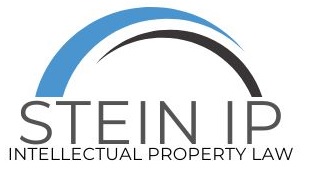- HOME
- > Blog Main Page
- > Trademark Modernization Act of 2020: A Promising Step Forward
Trademark Modernization Act of 2020: A Promising Step Forward
by Alexa Rose Colangelo
In response to a growing number of fraudulent trademark filings from abroad, congressional leaders recently introduced a bipartisan, bicameral bill that modernizes the Trademark Act of 1946 in order to lower barriers to entry for businesses and provide greater consumer protection against trademark violations.[1] The Trademark Modernization Act of 2020 fights back on behalf of businesses and consumers hurt by the market confusion and congestion that results from fraudulent trademark filings.[2] 
Section three of the bill codifies existing procedures that allow third parties to submit evidence that provides grounds for refusal during the examination stage of the trademark registration.[3]
Section five of the bill provides new ex parte procedures for registration cancellations on the grounds the mark was not in use in commerce. Instead of going through lengthy inter partes proceedings before the Trademark Trial and Appeal Board that mirror normal court proceedings and are governed by the Federal Rules of Civil Procedure, third parties would be able to request cancellations through a simplified expungement or reexamination procedure.[4]
While the Trademark Act of 1946 includes grounds for cancellation related to nonuse, for instance mark abandonment, the expungement procedures under the proposed legislation would explicitly allow for the cancellation of a mark that has never been used in commerce with respect to some or all of the goods and services set forth in the registration.[5] Reexamination procedures, on the other hand, would allow for the cancellation of a mark that was not in use on or before the filing date.[6]
The proposed expungement and reexamination procedures would allow a third party to file a petition for cancellation with the USPTO that identifies a mark registration and details elements of the party’s investigation that led the party to believe the mark was never used in commerce or was not in use in commerce on or before the filing date respectively.[7] The Director would then determine whether the petition sets forth a prima facie case that the mark was not in use, institute the appropriate expungement or reexamination proceeding, and notify both the petitioner and registrant.[8] If the Director agrees with the examiner’s findings that the mark was not in use, the Director would then cancel the registration for each good and service for which it was determined the mark was never in use (expungement) or was not in use on or before the filing date (reexamination).[9] The Director would also be able to institute his own expungement or reexamination proceeding under the proposed legislation.[10]
A party would be able to file a petition for an expungement procedure any time after three years from the date of registration of the mark while a reexamination procedure would have to be filed no later than five years from the date of registration.[11]
Section six of the bill clarifies that a party seeking an injunction for a trademark violation is entitled to a rebuttable presumption of irreparable harm.[12] Section six provides this important clarification following the court’s decision in eBay, Inc. v. MercExchange LLC, 547 U.S. 388 (2006), which held that injunctions could not be presumed for patent infringements.[13]
In providing new procedures to rid the trademark register of unused marks, the bill enables market entrants to secure marks that would otherwise be unavailable and protects consumers against mark confusion.[14] Representative Collins, one of the bill’s sponsors, stated that the “Trademark Modernization Act will help provide small businesses with new cost-effective tools needed to fight fraud and block bad actors from illegally obtaining trademarks” and will “ultimately will provide much needed relief for our small businesses, and it will give consumers peace of mind.”[15] While this bill has not yet passed, it takes important steps towards modernizing the United States’ trademark system in the wake of increasing abuse.
[1] See Trademark Modernization Act of 2020; https://hankjohnson.house.gov/sites/hankjohnson.house.gov/files/documents/TM%20Act%20-%20One%20Pager.pdf (last visited June 11, 2020).
[2] See id.
[3] See Trademark Modernization Act of 2020 Section by Section, https://hankjohnson.house.gov/sites/hankjohnson.house.gov/files/documents/TM%20Act%20-%20Section-by-Section%20.pdf (last visited June 11, 2020).
[4] See id.
[5] See Trademark Modernization Act of 2020, H.R. 6196, 116th Cong. § 5 (2020).
[6] See id.
[7] See id.
[8] See id.
[9] See id.
[10] See id.
[11] See id.
[12] See Trademark Modernization Act of 2020 Section by Section, supra note 3.
[13] See Trademark Modernization Act of 2020, supra note 1.
[14] See Trademark Modernization Act of 2020 Section by Section, supra note 3.
[15] See Sens. Tillis and Coons, Reps. Johnson, Collins, Nadler and Roby Introduce Bipartisan, Bicameral Legislation Modernizing U.S. Trademark System, THOM TILLIS U.S. Senator for North Carolina (Mar. 13, 2020), https://www.tillis.senate.gov/2020/3/sens-tillis-and-coons-reps-johnson-collins-nadler-and-roby-introduce-bipartisan-bicameral-legislation-modernizing-u-s-trademark-system.

TAGS:
RECENT POSTS
